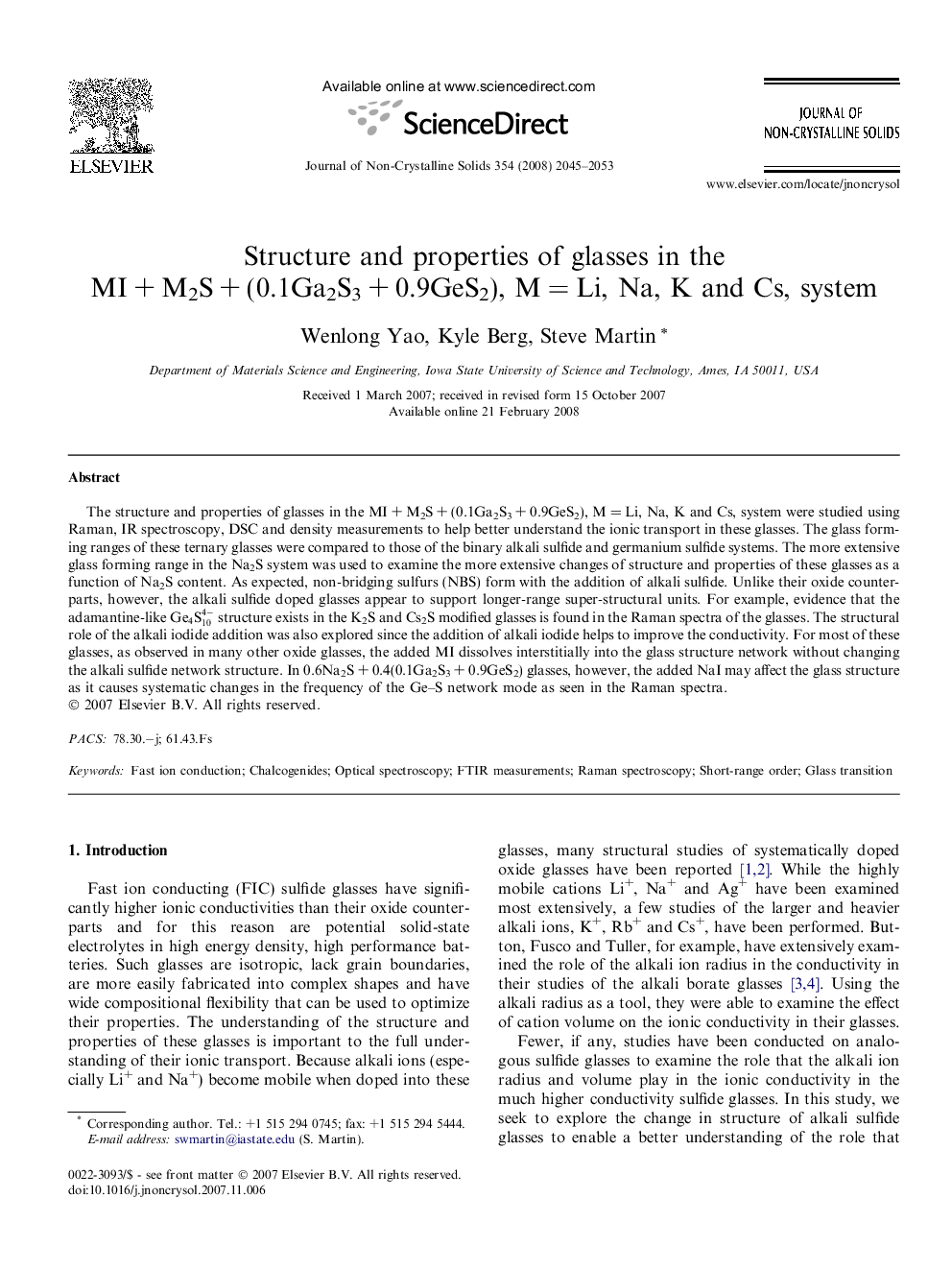| Article ID | Journal | Published Year | Pages | File Type |
|---|---|---|---|---|
| 1484613 | Journal of Non-Crystalline Solids | 2008 | 9 Pages |
The structure and properties of glasses in the MI + M2S + (0.1Ga2S3 + 0.9GeS2), M = Li, Na, K and Cs, system were studied using Raman, IR spectroscopy, DSC and density measurements to help better understand the ionic transport in these glasses. The glass forming ranges of these ternary glasses were compared to those of the binary alkali sulfide and germanium sulfide systems. The more extensive glass forming range in the Na2S system was used to examine the more extensive changes of structure and properties of these glasses as a function of Na2S content. As expected, non-bridging sulfurs (NBS) form with the addition of alkali sulfide. Unlike their oxide counterparts, however, the alkali sulfide doped glasses appear to support longer-range super-structural units. For example, evidence that the adamantine-like Ge4S104- structure exists in the K2S and Cs2S modified glasses is found in the Raman spectra of the glasses. The structural role of the alkali iodide addition was also explored since the addition of alkali iodide helps to improve the conductivity. For most of these glasses, as observed in many other oxide glasses, the added MI dissolves interstitially into the glass structure network without changing the alkali sulfide network structure. In 0.6Na2S + 0.4(0.1Ga2S3 + 0.9GeS2) glasses, however, the added NaI may affect the glass structure as it causes systematic changes in the frequency of the Ge–S network mode as seen in the Raman spectra.
